Star Trek Lower Decks Season 1 Episode 3 - Temporal Edict Review: What RoX & What Could be Improved?
In this video, we review the Second episode of Star Trek: Lower Decks, Envoys
Please note, spoilers ahead.
We're now 3 episodes in, and I think I'm starting to finally figure a few things out about this show. First and foremost, anything that happens before the credits has zero to do with the episode, and it's just there to try to warm up the audience. I look at this like an opening act for comedian, however normally the opening act is at least funny or entertaining. I have not found any of these three openings to be either, and would rather have something that ties directly into the episode.
Once again, I must say the overall look and feel of the show is spot-on. It's clear that those making this have an affection and appreciation for TNG era Star Trek. Even the look of the Klingons continues to be correct, unlike Star Trek: Discovery.
I'm disappointed that once again the story of this episode is lifted from another classic Star Trek episode, that being the Star Trek: The Next Generation episode Relics.
Lt. Commander Geordi La Forge : Look, Mr. Scott, I'd love to explain everything to you, but the Captain wants this spectrographic analysis done by 1300 hours.
[La Forge goes back to work; Scotty follows slowly]
Scotty : Do you mind a little advice? Starfleet captains are like children. They want everything right now and they want it their way. But the secret is to give them only what they need, not what they want.
Lt. Commander Geordi La Forge : Yeah, well, I told the Captain I'd have this analysis done in an hour.
Scotty : How long will it really take?
Lt. Commander Geordi La Forge : An hour!
Scotty : Oh, you didn't tell him how long it would *really* take, did ya?
Lt. Commander Geordi La Forge : Well, of course I did.
Scotty : Oh, laddie. You've got a lot to learn if you want people to think of you as a miracle worker.
When Scotty and Geordi are discussing time management in engineering, Scotty introduces us to buffer time, a concept that makes him look spectacular as an engineer and appease Captains that he works under. Buffer time is taken to a whole new level in this episode, as it appears something all of the lower deck screw partakes in, padding their time. This is essentially time clock fraud if you think about it
This is yet another episode that attempts to undermine hard work and dedication, instead championing those who slack off and never get ahead. Hard work is supposed to pay off, not doing work is supposed to be punished.
I did quite enjoy the back and forth between Commander Ransom and Ensign Mariner. I don't like Mariner as a character, but Ransom definitely puts her in her place regarding the fact that she is not a team player, and does not consider the entire crew, only her select group of friends. If a crew does not work together, regardless of personal conflicts, people can get hurt, people can die.
I really don't enjoy the fact that they continue to cast Boimler as a moron. he is so singularly focused that when an invading force is on the Cerritos he is still just going about his normal tasks, oblivious to anything else. This is just not realistic.
So after three episodes, I can honestly say if I weren't reviewing them for the channel I would not continue to watch. I have not enjoyed any of these episodes, I would put this as lower than Picard and potentially lower than Discovery this point.
I give this episode a final rating of a D.
#StarTrek #LowerDecks #Review
The footage used in this review are used under the Fair Use laws, referenced below:
https://www.law.cornell.edu/uscode/text/17/107
Notwithstanding the provisions of sections 106 and 106A, the fair use of a copyrighted work, including such use by reproduction in copies or phonorecords or by any other means specified by that section, for purposes such as criticism, comment, news reporting, teaching (including multiple copies for classroom use), scholarship, or research, is not an infringement of copyright. In determining whether the use made of a work in any particular case is a fair use the factors to be considered shall include—
(1) the purpose and character of the use, including whether such use is of a commercial nature or is for nonprofit educational purposes;
(2) the nature of the copyrighted work;
(3) the amount and substantiality of the portion used in relation to the copyrighted work as a whole; and
(4) the effect of the use upon the potential market for or value of the copyrighted work.
The fact that a work is unpublished shall not itself bar a finding of fair use if such finding is made upon consideration of all the above factors.
(Pub. L. 94–553, title I, § 101, Oct. 19, 1976, 90 Stat. 2546; Pub. L. 101–650, title VI, § 607, Dec. 1, 1990, 104 Stat. 5132; Pub. L. 102–492, Oct. 24, 1992, 106 Stat. 3145.)
-
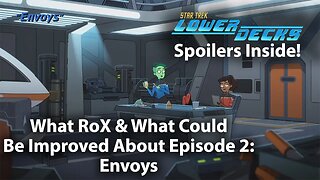 21:45
21:45
RoXolidProductions
3 years agoStar Trek: Lower Decks Episode 2 - Envoy Review: What Rox and What Could be improved
276 -
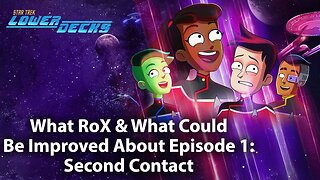 21:39
21:39
RoXolidProductions
3 years agoStar Trek: Lower Decks Episode 1 - Second Contact Review - What RoX & What Could Be Improved?
932 -
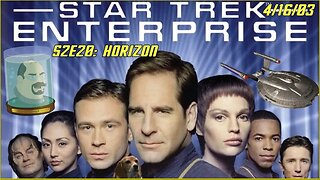 1:09:41
1:09:41
BirdOPrey5
9 months agoEnterprise Wednesday #45 - Horizon - Star Trek Enterprise Commentary & Review
50 -
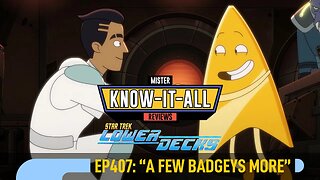 8:17
8:17
Mr. Know-It-All
8 months agoStar Trek Lower Decks Season 4 Episode 7 "A Few Badgeys More" Recap and Review
18 -
 13:23
13:23
Mr. Know-It-All
8 months agoStar Trek Lower Decks S4E9 'The Inner Fight' Recap and Review | Mr. Know-It-All
31 -
 1:05:36
1:05:36
BirdOPrey5
8 months agoEnterprise Wednesday #44 - Judgement - Star Trek Enterprise Commentary & Review
44 -
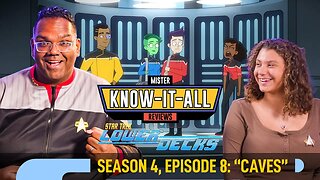 8:58
8:58
Mr. Know-It-All
8 months agoStar Trek Lower Decks S4 E8 'Caves' Recap & Review | Mr. Know-It-All and Baby Know-It-All
11 -
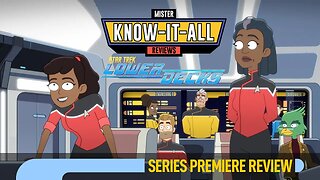 9:42
9:42
Mr. Know-It-All
9 months agoStar TreK Lower Decks Season 4 Episodes 1-2 Recap and Review
17 -
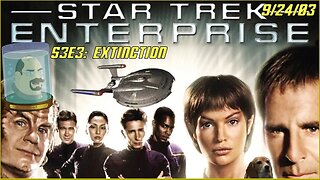 54:26
54:26
BirdOPrey5
6 months agoEnterprise Wednesday #54 - Extinction - Star Trek Enterprise Commentary & Review
114 -
 59:40
59:40
BirdOPrey5
1 year agoStar Trek Picard Season 3 Episode 7 - Dominion - Review / Reaction
125